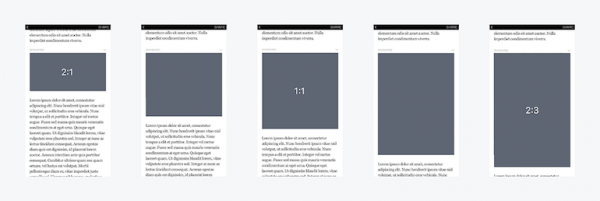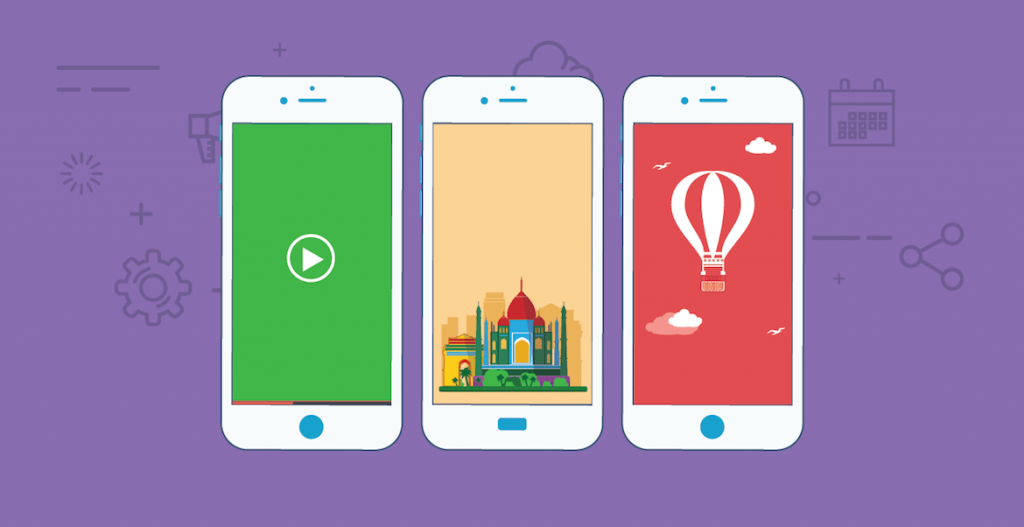If you ask me what’s the biggest invention after the internet I will definitely put my money on the scroll function.
Think about that, how would the world wide web look like if we couldn’t scroll? Or how would you look through your Facebook timeline, Twitter feed, or read an article without scrolling? It’s kind of an interesting thought or even terrifying for some of us.
Scrolling gives us the opportunity to discover and consume new content on the internet.
Scrolling helps us work better while we do our research or for the creative ones who are looking for inspiration. It would be interesting to make a simple math equation, how much do we scroll daily?
And we are scrolling every day, through our desktop, tablets, and even phones. Guess what, you are scrolling right now when you are reading this article! And you will scroll through your Instagram feed when you are waiting for your coffee at lunch.
But scrolling is not a product or a service, scrolling is a behavior that gave some developers, marketers, and platforms the power to launch new ideas, features, and even advertising opportunities.
Let’s talk advertising opportunities of scrolling.
What’s your first thought when you think about scrolling in terms of advertising? Something that is vertical, right? Some may say vertical content, vertical ads, vertical banners, or vertical video ads.
Well, my friend, every one of these things has the same term – vertical advertising.
Vertical advertising is not something new in advertising
Vertical banner ads are a common thing in the display advertising world.
Just think about banner ads like Half Page—300 x 600 px banner ad, Wide Skyscraper—160 x 600 px ad, or even the Skyscraper—120 x 600 px banner ad.
These are the ones that most big publishers use on their platforms and also are in the top most popular sizes that are are compatible with all the major online advertising networks including Google Display, Adcash, IAB, Retargeter, Adroll, and many more.
Talking about vertical banners is not something new. But talking about vertical ads in 2016 when we have Facebook ads, Instagram ads, Snapchat geofilters, or other networks where a small, medium business, or even an enterprise is advertising, is something worth talking about.
And by the way, let’s not forget about the rise of mobile advertising!
According to eMarketer, mobile advertising will dominate digital ad spending.
| 2015 | 2016 | 2017 | 2018 | 2019 | |
| Mobile Ad spending- Billions $ | 28.7 | 40.5 | 49.8 | 57.7 | 65.8 |
| Percentage change | 50% | 41% | 23% | 16% | 14% |
| Percentage of digital ad spending | 49% | 60.4% | 66.6% | 69.7% | 72.2% |
But why is there so much debate around the vertical ads today?
Because advertising is a fast industry that changes from day to day.
Because banner ads are not dead, they just reinvented themselves and today we are calling them Facebook ads, Instagram ads, Promoted pins, or Native ads.
And the vertical banners are a new thing that even Facebook still tests!
Facebook is betting on Vertical Ad Sizes
In a recent blog post, product manager Harshit Agarwal wrote that publishers with direct sold advertising businesses can easily use several formats up to an aspect ratio of 2:3. They also can include custom and premium formats of their direct sold campaigns to Instant Articles.

Why is Facebook doing this? Because they want to expand the availability of ad inventory and also to improve the reading experience.
So they added a few new formats that will be supported in Instant Articles:
In February 2016, Facebook introduced a new ad format, called Canvas – a new post-click, full-screen, immersive mobile ad experience on Facebook that loads nearly instantaneously.
Andrew Cunningham (Social Marketing at Huge) compares Canvas from Facebook with an interactive-magazine spread. And it’s kind of interesting to see how much Canvas can do for a business if it’s designed well.
But for me, Canvas it’s just another confirmation of the theory that vertical banners are on the rise and advertisers should start thinking about how to design great ads that can bring them not only clients but also to make the user have a better experience while he/she is engaging with it.
The type of content of the ad
There are 2 types of vertical banners: videos, static or animated.
Even if we call them Stories (Snapchat or Instagram), documentary or music video, photos or graphics. If it’s designed in a vertical way and their purpose is to make people click on them, they are vertical banners.
One of the world’s largest mobile ads platforms is Instagram. With a community of 500 million users and 500.000 advertisers, they are leading the marketplace for the mobile ad industry.
But there was a time when Instagram was well known for 2 brand identities: edit photos (apply filters) and 1:1 photos. For some users, this format of uploading photos was a big struggle but for others, it was kind of challenging to start thinking inside the box (literally).
And then the time came and Instagram challenged its community to start looking outside the square. So users can now upload photos and videos that are not only a 1:1 ratio but that are also landscape or portrait formats. But if brands want to advertise, they should use a 1080 x 1080 px size.
When 65% of top-performing Instagram posts feature a product from a brand, that is a good place where marketers can bring their company.
Here at Creatopy we designed Instagram ad templates that can help every marketer, advertiser, or small business owner to start his own Instagram advertising campaign right now.
More of that, Instagram rolled out a feature that helps users to engage in a more natural way with their community – Instagram Stories. And here are the 6 ways you can use this feature if you want to start right now!
But vertical content is not something that only Facebook is betting its money on. There is Snapchat, which is well known for this type of content!
This is one of the reasons why Snapchat is so popular today. Because you can easily create content that can be shared with your community. Also, Snapchat launched a feature where publishers can bring their daily stories in a new format – vertical videos.
Snapchat told the Daily Mail (which is one of their Discover partners),
that vertical video ads have up to 9x more completed views than horizontal video ads.
And now, these big media companies are launching content departments that are creating videos and other ad formats that are specially delivered for these platforms.
Todd Haskell, who is the chief revenue officer at Hearst Magazines Digital Media who runs 2 brands on Discover from Snapchat, Cosmopolitan, and Sweet said about vertical video ads on Snapchat:
“We’ve seen really remarkable performance on mobile when we produce experiences using a vertical video approach. We are working on creating products that take the vertical video expertise we have, create content using vertical video and actually put it on our sites.”
But guess what, Facebook, Snapchat, and Instagram are not the only social platforms that are betting on vertical content.
There is also Pinterest, which is well known as a lifestyle social network where all the creatives and everybody who is seeking inspiration spend their time.
Pinterest is rolling out their own ads called Promoted Pins. Pinterest is designed as a vertical format content so this is why these ads can bring such a big value for the advertiser.
And if we go a little bit outside the social media industry, we can see that there are publishers who create vertical ads for their clients.
There is the Washington Post that is integrating vertical videos in their articles and also Daily Mail. Jon Steinberg, Chief Executive of The Daily Mail’s North American operation said
“We find the engagement much higher. Users are more satisfied, and there’s a higher completion rate on them.”
So, are vertical videos a crime on the small screen? Not really.
More of that, they are welcome if they are designed well and distributed to the person who is really interested in that content.
If the researchers tell us that most people hold their phones in a vertical way, that means that ads that are full-screen and vertical are the most effective.
And now think about this great format where people are really engaging with your banner ads.
When you design a vertical banner that fills the mobile phone screen, where people can scroll up and down to consume and engage with your content, that is something that you need to rely on.
And how can you design a successful vertical ad? Understand your consumer behavior, see where this ad will be published, and make them engage with it by using your creativity and brand uniqueness.
Now back to you, what do you think about vertical banners? Is this something that you want to try for your next display ad campaign?
